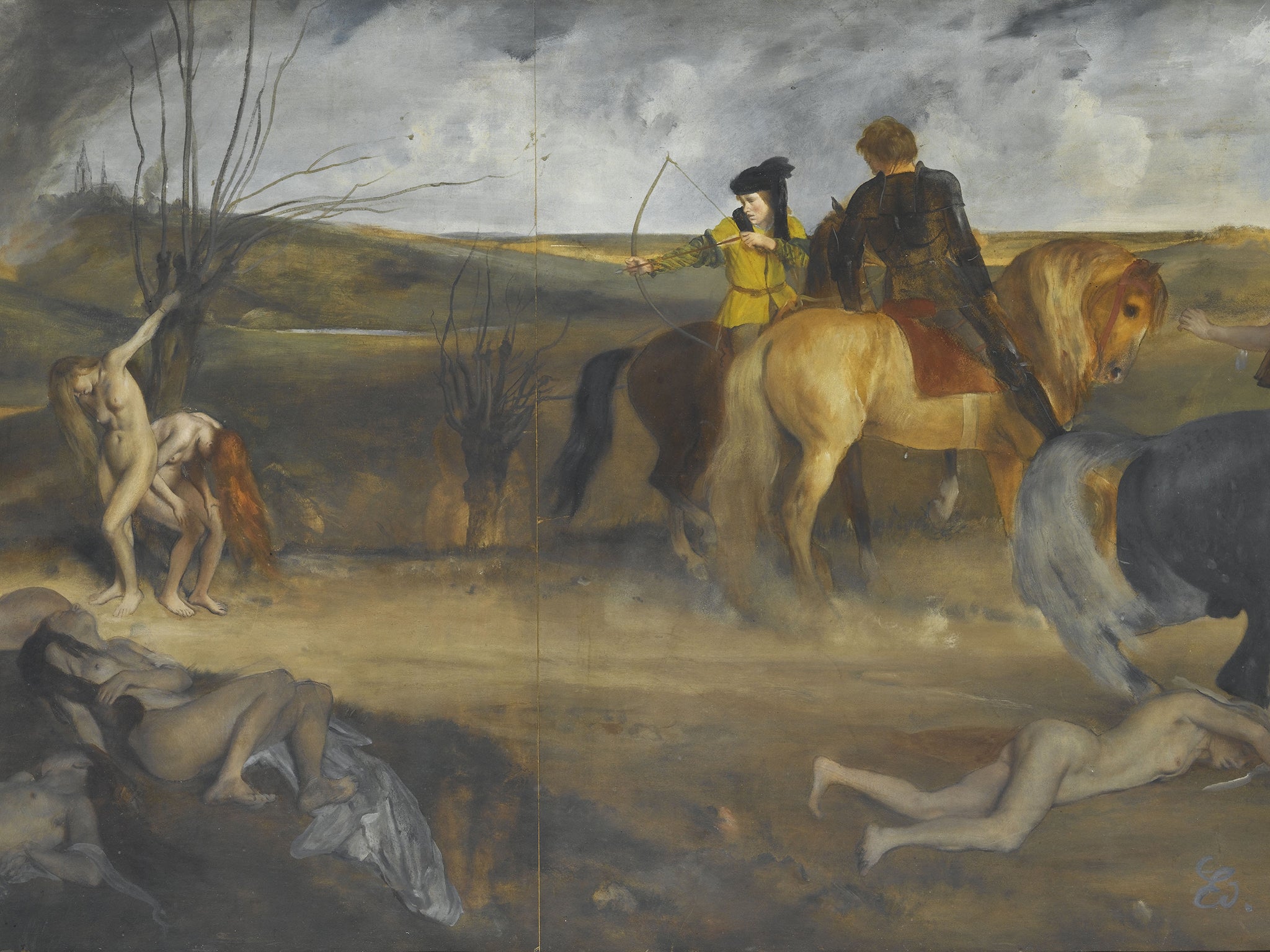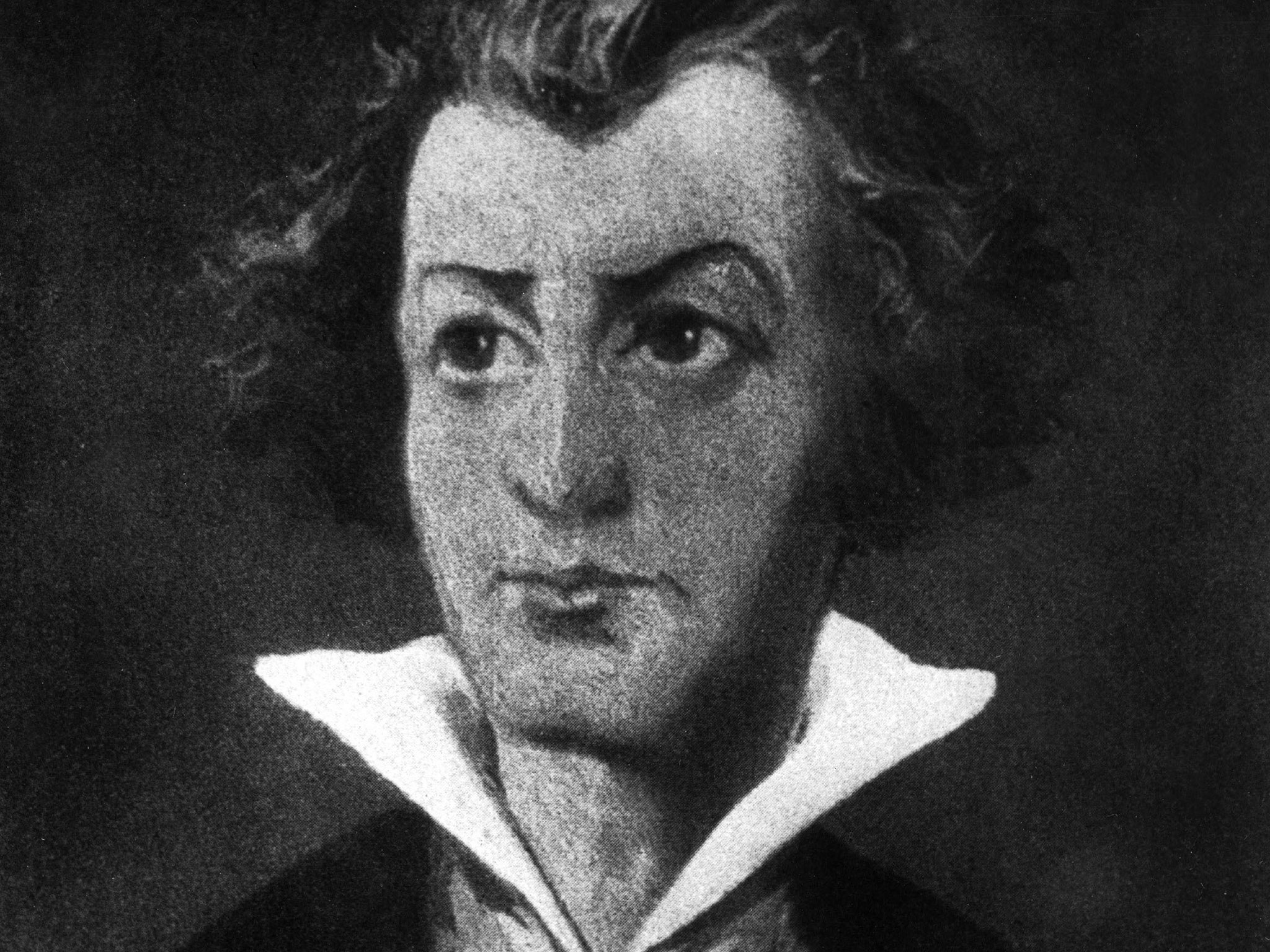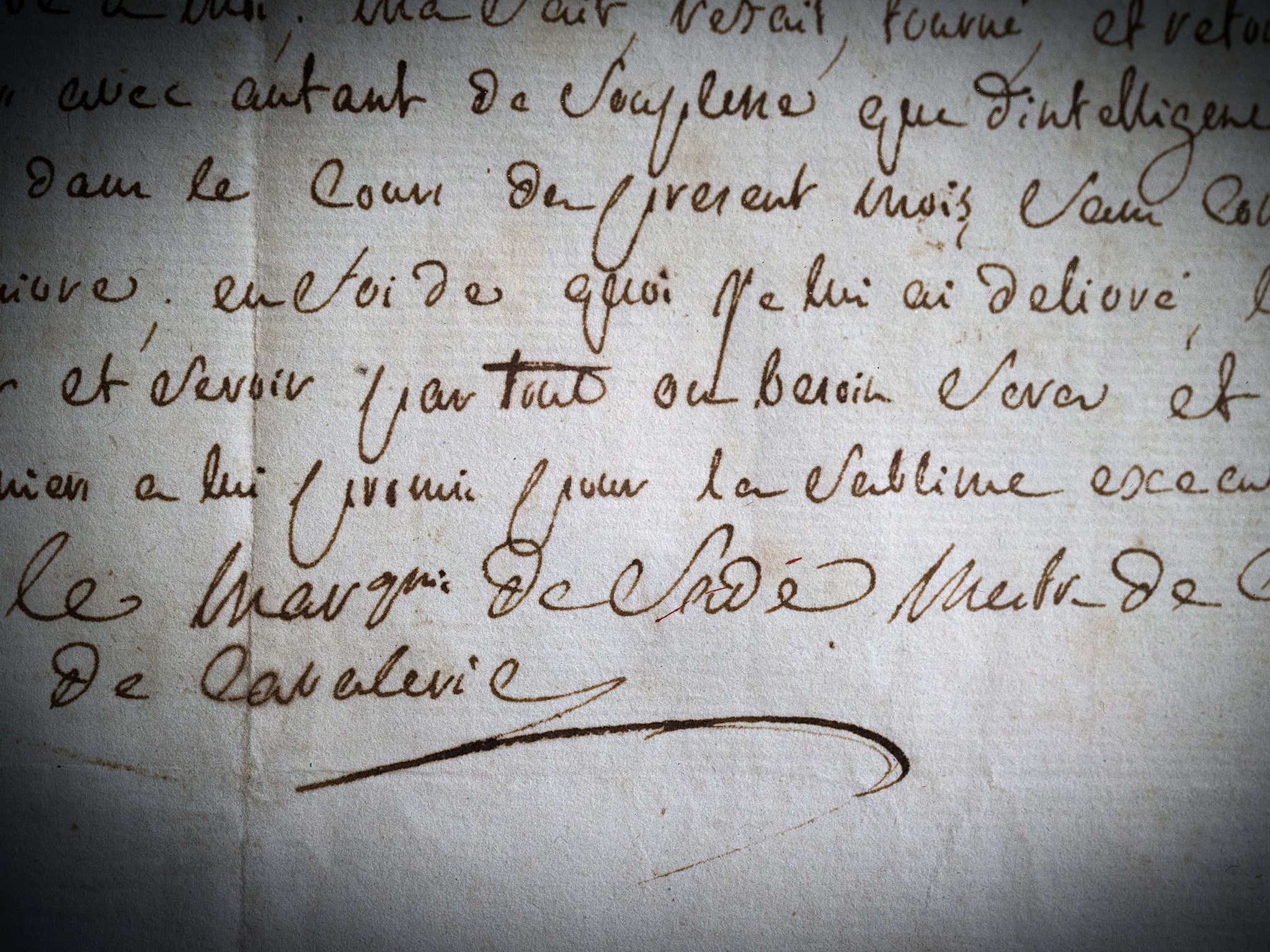Marquis de Sade: rebel, pervert, rapist...hero?
An exhibition at the Musée d’Orsay has divided public opinion once again on whether the notorious aristocrat answered the great questions of his age – or simply made a case for indefensible violence and cruelty

The Marquis de Sade was many things – a rapist, a paedophile, and an eloquent, literary apologist for sexual cruelty.
To his modern admirers, Donatien Alphonse François, Comte de Sade was also a revolutionary, one of the first writers and thinkers to explore the darkest labyrinths of the human soul. The jury is out on whether Sade was, in the contemporary sense of the word, a “sadist”.
In his many guises, including nearly 30 years as a prisoner under three regimes, royal, republican and imperial, the marquis never turned his hand to painting. It seems perverse, therefore, for the Musée d’Orsay in Paris to celebrate his 200th anniversary with an art exhibition.
“Sade – Attaquer le soleil” (Sade – attacking the sun) seeks to prove that Sade’s writing, although officially banned in France until the 1950s, had an enormous impact on 19th- and 20th-century art. It traces – sometimes convincingly, sometimes wilfully – Sade’s influence on the work of, amongst others, Ferdinand-Victor-Eugène Delacroix, Francisco Goya, Edgar Degas, Paul Cézanne, Pablo Picasso and the surrealists.
The exhibition is part of a bicentenary push by French intellectuals to release Sade, who lived from 1740 to 1814, from the shadows and into the literary and artistic mainstream. There is an avalanche of new books. There is an exhibition in Paris of his letters and manuscripts, including the scroll of The 120 Days of Sodom whose catalogue of 600 recommended “passions” includes the rape of children as young as five. The “divine”, or damned, marquis also made his bow this week as a character in a video game in the Assassin’s Creed series.
Since he was “rediscovered” and championed by the poet Guillaume Apollinaire in 1909, Sade has been placed by some of his admirers alongside Rousseau or Voltaire as one of the French 18th-century iconoclasts who “killed God”, smashed the mould of conventional thought and created the modern world.
Pierre Guyotat, a French erotic-literary novelist, says: “Sade is, in a way, our Shakespeare. He has the same sense of tragedy, the same sweeping grandeur. Taking pleasure in the suffering of others is not such an important part of his writings as people claim. He has his tongue sticking out permanently. He is incessantly ironic.”
To claim Sade as humanist and liberator, rather than deviant or pervert, sticks in the throat of other intellectuals. A new book by the philosopher Michel Onfray (La Passion de la Méchanceté or the “passion for wickedness”) makes an excoriating attack on the cult of Sade amongst French left-wing or avant garde thinkers.

“It is intellectually bizarre to make Sade a hero,” he says. “Even according to his most hero-worshipping biographers, this man was a sexual delinquent.”
Mr Onfray says that a “myth” has been fashioned that Sade was a “libertarian, anarchist and revolutionary” – even a “feminist”. Not a bit of it, he says. Sade was an arrogant “feudal” aristocrat who thought that he had a right to torture and sexually abuse servants or beggars. His recorded exploits include the kidnapping and sexual torture of pre-adoscent serving girls.
The Musée d’Orsay exhibition does not try to hide the disturbing truth about Sade’s life. It is, however, littered with quotations which present him as a thinker and rebel rather than a criminal.
The co-curator of the exhibition, Annie Le Brun, says that the importance of Sade’s thinking was that he rejected abstract thought. He was not a philosopher but an anti-philosopher.
Philosophy, and religion, were false because they were too cerebral. Patterns of human behaviour must be traced to the flesh, not to the mind alone. “For him cruelty is at the heart of humanity and indivisible from desire,” Ms Le Brun said.
In one quotation displayed in the exhibition, Sade mocks the celebrated saying of the French 17th-century philosopher René Descartes: “I think, therefore I am.”
“This idea has no sound, no colour, no smell,” the marquis says. “It does not comes from the senses and without the senses there can be no real ideas.”
Ms Le Brun says that this approach – Sadian rather than sadist – had an enormous influence through secretly circulated texts on 19th-century writers like Gustav Flaubert and Friedrich Nietzsche. Because it proclaimed the physical senses to be the true driving forces of passion and creativity, it also influenced artists from Cézanne to the surrealists.

“Our aim is to explore how the 19th century became a conduit for ideas that were officially cursed,” Ms Le Brun says. “In a subterranean way [Sade] created a revolution of taste, especially in the presentation of images of the body… He eroticised painting.”
That Sade was wholly, or even partly, responsible for the shift in artistic taste in the 19th century is a large claim. How much influence did he have on Monet or Van Gogh?
The collection includes three relatively unknown and disturbingly violent paintings by Cézanne, including scenes of rape and strangling. There are a couple of violent canvasses by Goya and one by Dégas. The rest of the show is an uneven collection of 19th- and 20th-century portrayals of sex, violence and viciousness. Some is compelling ; much is simply weird and outlandish.
Ms Le Brun’s co-curator Laurence de Cars said: “We censored ourselves very little… It is obviously not an exhibition for everyone.”
A separate section is labelled the “cupboard of perversities”. Those of a sensitive disposition are recommended to stay outside. It is difficult to see why. It seems little different from the rest of the show.
The exhibition has attracted large numbers but the visitors’ book suggests that many of them go away baffled or disgusted. Comments range from “fantastic” and a “truly beautiful exhibition” to “what a bunch of perverts”. An anonymous visitor writes: “This exhibition is torture. I suppose it is therefore a great success for M Sade.”
At a time when we are grappling finally with the lasting damage caused by sexual violence, and especially the abuse of children, the championing of Sade may seem to many to be foolish, misplaced or even wicked.
Mr Onfray says that Sade’s “philosophy” amounts to an “an invitation to crime”. He suggests that Sade’s “abolition of pity” was a precursor not of modern art but the Holocaust.
Au contraire, says Ms Le Brun. Sade invented nothing. His importance was to describe, and analyse, the cruelty which has always been at the core of human experience.
He asked the questions which “haunted the 19th century”, she says. “How to speak about evil and desire when the framework of religion is collapsing?”
Join our commenting forum
Join thought-provoking conversations, follow other Independent readers and see their replies
Comments